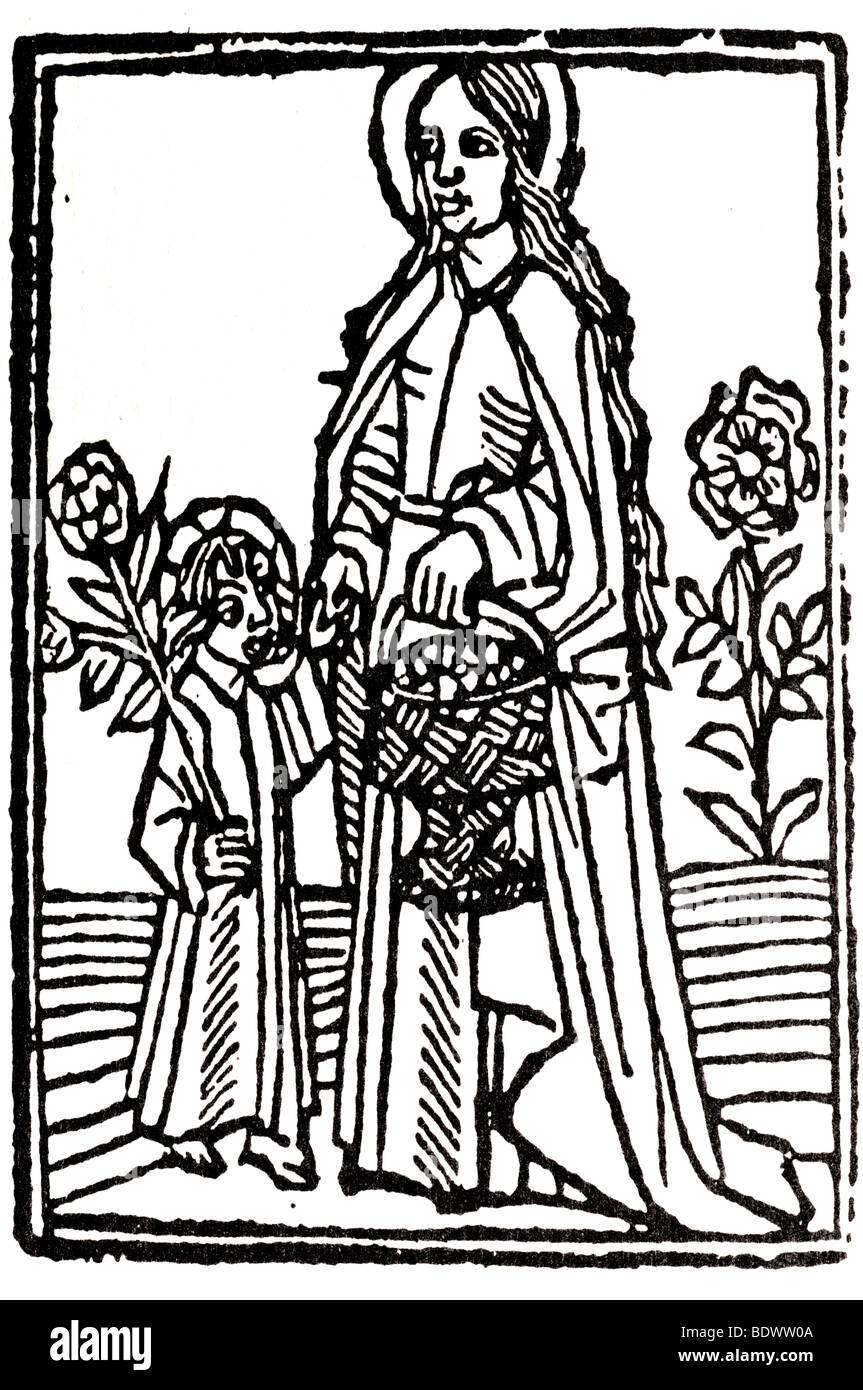w de worde 1507 4 sept voragine jacobus de legenda sctor jesus as a child wearing a cruciform nimbus a flower in his right hand

Image details
Contributor:
19th era 2 / Alamy Stock PhotoImage ID:
BDWW0AFile size:
48 MB (1.9 MB Compressed download)Releases:
Model - no | Property - noDo I need a release?Dimensions:
3338 x 5025 px | 28.3 x 42.5 cm | 11.1 x 16.8 inches | 300dpiDate taken:
1507More information:
Wynkyn de Worde (also Wynken; originally Jan van Wynkyn) (died 1534) was a printer and publisher known for his work with William Caxton, and is recognized as the first to popularize the products of the printing press. De Worde was born in Wœrth in Alsace; the name by which he is generally known means "Wynkyn of Wœrth." Traditionally, he was believed to have accompanied Caxton to England in 1476; more recently, it has been argued that de Worde actually arrived c. 1481, and that Caxton brought him to England to counter the competition of a second printer. (John Lettou set up a press in London in 1480.) De Worde improved the quality of Caxton's product; he was, in this view, "England's first typographer." In 1495, following Caxton's death in 1491 and a three-year litigation, de Worde took over Caxton's print shop. De Worde is generally credited for moving English printing away from its late-Medieval beginnings and toward a modern model of functioning. Caxton had depended on noble patrons to sustain his enterprise; while de Worde enjoyed the support of patrons too (principally Margaret Beaufort, mother of King Henry VII), he shifted his emphasis to the creation of relatively inexpensive books for a commercial audience and the beginnings of a mass market. Where Caxton had used paper imported from the Low Countries, de Worde exploited the product of John Tate, the first English papermaker. De Worde published more than 400 books in over 800 editions (though some are extant only in single copies and many others are extremely rare). His greatest success, in terms of volume, was the Latin grammar of Robert Whittington, which he issued in 155 editions. Religious works dominated his output, in keeping with the tenor of the time; but de Worde also printed volumes ranging from romantic novels to poetry (he published the work of John Skelton and Stephen Hawes), and from children's books to volumes on household practice and animal husbandry. He innovated in the use of illustrations